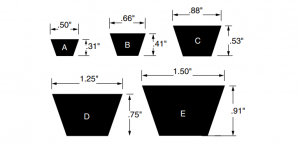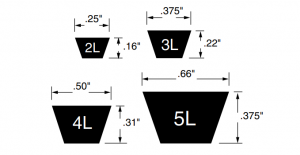We provides power transmission and drive belts in a broad range of power options, from low-speed high-torque applications to the fastest tangential drive. We engineer both flat power transmission belt and synchronous power transmission belt to meet the pulley diameter and horsepower requirements of your facility.
Flat belting is a highly efficient solution for power transmission belt, boasting energy efficiencies as high as 99%. We engineer flat belting solutions to suit the inertial force and shock loading of the drive, the abruptness of the drive start and the presence of contaminants such as oil, water and grease. Flat high efficiency belts are fabricated out of highly oriented nylon, aramid fiber or polyester fiber, depending on the application. These belts are almost always spliced truly endless to endure the duress of power transmission belt applications, convey greater horsepower and negotiate small pulley diameters.
Our synchronous belts (different from the conveyance timing belts we provide) also function in power transmission belt applications. We fabricates truly endless synchronous belts from traditional polyurethane for high speed and high horsepower applications, while high-performance rubber synchronous belts provide high resistance to oils, coolants, ozone and heat. Traditional neoprene belts are also available with precision slitting to the exact width for your application.
This article comes from mir-belting edit released


